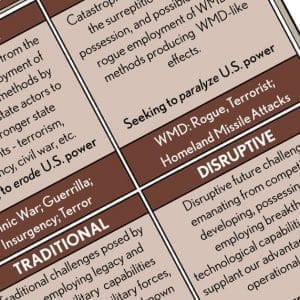(okay, I mentioned this a couple of weeks ago, just wanted to expound on the idea …)
Everyone’s heard of Pareto’s wonderful 80/20 rule. I’ve identified a variant of that rule that applies to all sorts of “continuing education” – like presentations at a trade conference, or skills training for new software packages. It really struck me when I was in grad school, slogging through Accounting and Business Law and marvelling at the range of difficulty in the two subjects.
Anyway, the Continuing Education Pareto Principle (CEPP, or maybe MacLennan’s Variant … that sounds good) goes like this:
For the typical part-time student, conference attendee, seminar participant, etc., educational content can be broken out like this:
- 50% of the content is stuff you already know, or is so blatantly obvious that it adds no incremental knowledge (i.e. “Duh!”)
- 30% of the content is stuff that is immediately and easily understood, but you never would have thought of it unless it was pointed out to you (i.e. “well, now that you mention it …”)
- 20% of the content is new, value-adding, interesting stuff (i.e. “Aha!”)
The 50% stuff is why people like to sneak out of conferences early.
The 20% stuff is expected – that’s what you paid for.
The interesting stuff is that 30% category, where you are making opportunistic connections, drawing on common experience to gain new understanding in totally different areas. More often than not, you’ll find yourself mentally translating the “new” concepts to terminology or abstracts you already pwn.
This is a very common phenomenon:
The Supply Chain professional speaks about driving an accurate demand forecast by “cleaning history”, removing the uptick in orders due to things like promotions, because they give an inaccurate picture of unconstrained demand …
… and the Finance professional sees the analogy to extraordinary
items and other non-operating expenses or losses that are called out on the income statement, to give a more accurate picture of the firm.
The Finance professional plans for consolidated financial statements among multiple entities, spending lots of quality time over organizational hierarchies and common charts of accounts …
… and the IT analyst sees the similarities with his drive for database normalization and consistent master data.
The IT analyst builds the project plan, loads it with tasks and resources, and levels the resources to provide a reasonably accurate completion date …
…and the Supply Chain professional sees similarity in computing the constrained demand, and dissonance in the fact that unconstrained demand gives a better picture of the market. Then they realize that MS Project might be able to do production planning for a small job shop …
The value in understanding this variant (CEPP) is that you need to leverage what you know in one area to quickly get up to speed in another area. There might be some risk – trying to see and understand everything new in terms you already understand. The real opportunity, however, is in applying new ways of thinking about the stuff (you think) you already know …





This Post Has 0 Comments